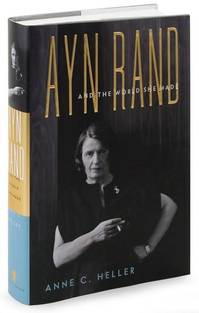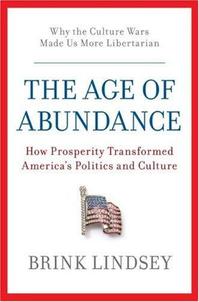Source of book image:
http://2.bp.blogspot.com/_ZnmbvrcWaFQ/TQDZppbZS6I/AAAAAAAAAoM/CjtOtOuGYAM/s1600/ayn-rand-and-the-world-she-made.jpg
For Rand, adopting the dollar sign as a symbol was an ironic gesture–an elegant and graceful way of thumbing her nose at those who attacked the innovation and creativity of capitalism. They criticized a caricatured version of capitalism, and she threw the caricature back at them.
But at her most serious, money was never an end-in-itself for her, but rather a reward for achieving creative innovation, and a means for accomplishing even more ambitious creative innovation.
Remember that in Rand’s pure and lyrical Anthem, the hero is willing to give his invention away, and even be killed, as long as the Council agrees to allow the light he invented to keep shining.
In that wonderful moment with Bennett Cerf, Ayn Rand lived up to the hero she had created:
(p. 8) When Bennett Cerf, a head of Random House, begged her to cut Galt’s speech, Rand replied with what Heller calls “a comment that became publishing legend”: “Would you cut the Bible?” One can imagine what Cerf thought — he had already told Rand plainly, “I find your political philosophy abhorrent” — but the strange thing is that Rand’s grandiosity turned out to be perfectly justified.
In fact, any editor certainly would cut the Bible, if an agent submitted it as a new work of fiction. But Cerf offered Rand an alternative: if she gave up 7 cents per copy in royalties, she could have the extra paper needed to print Galt’s oration. That she agreed is a sign of the great contradiction that haunts her writing and especially her life.
. . .
Yet while Rand took to wearing a dollar-sign pin to advertise her love of capitalism, Heller makes clear that the author had no real affection for dollars themselves. Giving up her royalties to preserve her vision is something that no genuine capitalist, and few popular novelists, would have done.
For the full review, see:
ADAM KIRSCH. “Capitalist With a $.” The New York Times Book Review (Sun., November 1, 2009): 1 & 8.
(Note: ellipsis added.)
(Note: the online version of the review is dated October 29, 2009 and has the title “Ayn Rand’s Revenge.”)
Book reviewed:
Heller, Anne C. Ayn Rand and the World She Made. New York: Nan A. Talese/Doubleday, 2009.
Here is what the hero says in the key passage of Anthem:
“Our brothers! Your are right. Let the will of the Council be done upon our body. We do not care. But the light? What will you do with the light?” (p. 72)
Source:
Rand, Ayn. Anthem. Caldwell, Idaho: The Caxton Printers, Ltd., 1946.





